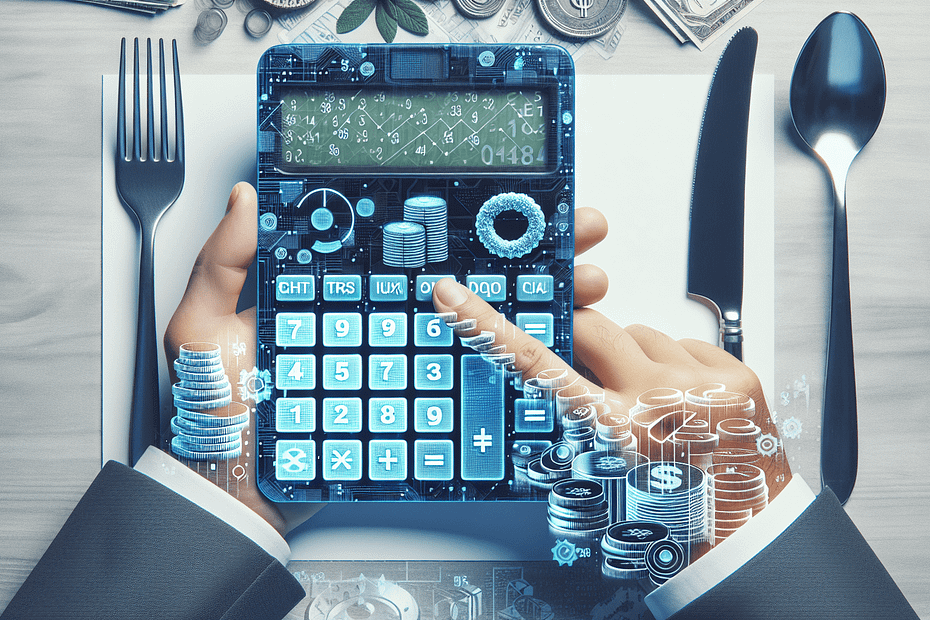Planning a budget for your restaurant can be an exciting yet daunting task. With so many factors to consider, it’s essential to understand the key considerations that can make or break your financial success. From analyzing your operational costs to forecasting sales and monitoring cash flow, creating a restaurant budget requires careful attention to detail. In this article, we will explore the crucial factors you need to consider to effectively manage your finances and achieve long-term profitability. So, whether you’re a seasoned restaurateur or a new entrepreneur venturing into the hospitality industry, read on to discover the essential elements of creating a restaurant budget. Creating a budget for your restaurant is essential to ensuring its long-term success. Without a clear understanding of your start-up costs, fixed and variable expenses, revenue projections, employee expenses, overhead costs, marketing and promotions, taxes and fees, contingency fund, and financial performance tracking, it can be challenging to manage your finances effectively. In this article, we will guide you through each step of budgeting for your restaurant, helping you make informed decisions and maximize your profitability.
Determining Start-up Costs
When opening a restaurant, one of the first considerations is the start-up costs involved. These costs can vary depending on the size and location of your establishment. Rent and lease agreements will likely be a significant expense, so carefully analyze potential locations and negotiate favorable terms. Construction and renovation expenses should also be factored in, as you may need to modify the space to meet your needs. Equipment and furnishings, such as kitchen appliances, tables, chairs, and decor, should be budgeted for as well. Licenses and permits, such as the necessary health and alcohol permits, are crucial to operating legally. Finally, your initial inventory, including food, beverages, and supplies, must be included in your start-up costs.
Analyzing Fixed and Variable Costs
Once your restaurant is up and running, you need to understand the fixed and variable costs associated with its operation. Fixed costs are expenses that remain constant regardless of your sales volume. Examples of fixed costs include rent, utilities, and insurance. On the other hand, variable costs fluctuate based on your sales volume. These can include food and beverage costs, as well as labor expenses. By identifying your fixed and variable costs, you can better understand the financial impact of changes in sales volume. It is also crucial to continuously analyze your costs to identify cost-saving opportunities, such as negotiating better supplier contracts or optimizing staffing levels.
Estimating Revenue and Sales
To create a realistic budget, you must estimate your restaurant’s revenue and sales. Conduct thorough market research and analysis to understand your target audience, competitors, and market trends. This research will help you project your sales volume accurately. When estimating revenue, consider incorporating different revenue streams such as dine-in, takeout, and catering services. Each revenue stream should be analyzed separately to help evaluate their financial contribution to your bottom line. Pricing strategies for your menu should also be carefully considered, taking into account ingredient costs, competitor pricing, and customer perceptions of value. By accurately estimating your revenue and sales, you can make informed decisions regarding your pricing, marketing, and operations.
Budgeting Employee Expenses
Employee expenses are a significant aspect of your restaurant’s budget. Begin by determining your staffing requirements and wages. Consider the number of employees needed for each shift and their roles, and research industry standards for wages to ensure competitiveness. Training and development costs should also be budgeted for, as ongoing employee education is vital for maintaining a high standard of service. Additionally, employee benefits and taxes, such as health insurance and payroll taxes, must be factored into your budget. Optimizing your labor costs can be achieved through effective scheduling, cross-training employees, and implementing productivity strategies to minimize overtime and maximize efficiency.
Calculating Overhead Costs
Overhead costs encompass various expenses necessary for the overall operation of your restaurant. Rent and utilities should be considered within this category, as they are essential for keeping your doors open. Insurance, including property, liability, and worker’s compensation coverage, is crucial to protect your business. Maintenance and repairs, both preventive and unexpected, must be included as well. Technology and software expenses, such as point of sale systems and reservation platforms, play a vital role in efficient operations. Finally, administrative and office expenses, including office supplies, licenses, and permits, should not be overlooked when calculating overhead costs.
Including Marketing and Promotions
Marketing and promotions are essential for attracting customers and increasing sales. Allocate a portion of your budget to advertising campaigns, such as online advertisements, radio spots, or local print media. Promotional events, such as happy hour specials or themed nights, can generate buzz and attract new customers. In today’s digital age, social media and online marketing are crucial for reaching your target audience. Consider investing in professional photography, engaging content creation, and targeted social media advertising to maximize your online presence. Lastly, allocate funds for printed materials, such as menus, flyers, and signage, to ensure cohesive branding and effective communication of your offerings.
Accounting for Taxes and Fees
Taxes and fees are an unavoidable aspect of running a restaurant. Income taxes will be based on your restaurant’s profits and must be factored into your budget. Sales tax is imposed on the goods and services you sell, so accurately tracking and collecting sales tax is essential. Additionally, service charges and tips must be considered, as they affect both employee compensation and potential revenue. License and permit fees, such as health permits and liquor licenses, are necessary for legal operation and should be budgeted for accordingly. Membership fees for industry associations or professional networks may also be worth considering for networking and marketing opportunities.
Building a Contingency Fund
Creating a contingency fund is crucial for dealing with unexpected expenses, emergency repairs, slow business periods, and seasonal fluctuations. It is recommended to set aside a percentage of your revenue each month to build up this fund gradually. Unexpected expenses may include equipment breakdowns, lawsuits, or unforeseen repairs. Emergency repairs, such as plumbing or electrical issues, can disrupt your business and require immediate attention. Slow business periods, such as during off-peak seasons, can impact your revenue and cash flow. By having a contingency fund in place, you can better navigate these challenges without jeopardizing the financial stability of your restaurant.
Tracking Financial Performance
Regularly tracking your restaurant’s financial performance is essential for making informed business decisions. Conduct regular financial analysis by reviewing your profit and loss statements, which provide insights into revenue, expenses, and profitability. Cash flow management is critical to ensure you have sufficient funds to cover your expenses and invest in growth. By monitoring your financial performance, you can identify any cost overruns or shortfalls and take corrective action promptly. This analysis will also help you spot trends and patterns, allowing you to make adjustments and capitalize on opportunities.
Reviewing and Revising the Budget
Creating a budget is not a one-time task; it requires ongoing review and revision. Conduct regular budget reviews to evaluate your actual expenses and revenue against your projected numbers. Identify areas for improvement and make adjustments accordingly. A flexible budget allows for changes to be made as needed, ensuring that your financial goals remain achievable. By staying proactive and continuously improving your budget, you can optimize your restaurant’s financial performance and maximize your profitability.
In conclusion, creating a comprehensive restaurant budget is crucial for the success of your business. By carefully considering your start-up costs, analyzing fixed and variable expenses, estimating revenue and sales, budgeting employee expenses, calculating overhead costs, including marketing and promotions, accounting for taxes and fees, building a contingency fund, tracking financial performance, and regularly reviewing and revising your budget, you can make informed financial decisions and increase your restaurant’s profitability. Remember, a well-planned budget is not only a financial roadmap but also a tool for ensuring the long-term success of your restaurant.



